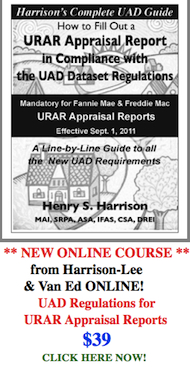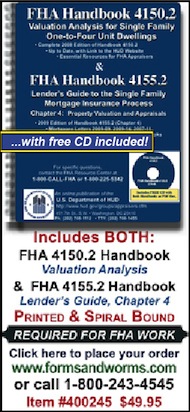Article
Citing Flawed Valuations, Bank of America Repurchases
$330 Million in Freddie Mortgages
Bank of America will pay Freddie Mac $330 million dollars to buy back allegedly flawed home loans, Bloomberg reported on May 23.
Dan Frahm, a spokesman for the Charlotte, N.C.-based Bank of America, told Bloomberg that the bank has agreed to the repurchase “because the valuation method used at origination did not meet the investor’s technical requirements.” Frahm noted the flaws have since been repaired.
Bank of America CEO Brian T. Moynihan is looking to mitigate further losses after incurring more than $42 billion dollars in costs related to defective home loans, Bloomberg reported. Buyers and insurers of mortgage securities have insisted on compensation for faulty debt created by Countrywide Financial Corp., which the bank purchased in 2008, at a time when the institution was the nation’s largest residential lender.
Freddie Mac and Bank of America announced a $1.28 billion settlement in January 2011 resulting from bad loans sold through 2008 by Countrywide. Other transactions between the entities were not included in the deal, and a portion of the loans covered by Freddie’s latest announcement had more recent origination dates.
Bank of America’s backlog of pending requests for refunds on shoddy loans reached a record $16.1 billion in the first quarter 2012 as the dispute widened between BOA and Fannie Mae, which ceased accepting new loans from Bank of America in January, according to the Bloomberg report.
“It is also unclear if this is a one-time issue or a process that will be revisited at some regular interval,” the Barclays analysts told Bloomberg. “Another concern would be whether similar buyouts are being considered or being implemented at Fannie Mae.”
Nationally Recognized Appraisal Leader Ann O'Rourke is a featured speaker!
Article
How to Appraise in a Declining Market
An Analysis by Henry S. Harrison, MAI, SRPA, ASA of
APB Valuation Advisory #3: Residential Appraising in a Declining Market
The Appraisal Practices Board (APB) of the Appraisal Foundation has just released “APB Valuation Advisory #3 – Residential Appraising in a Declining Market” dated May 7, 2012. This 33 page document is available at the Appraisal Foundation Website: www.appraisalfoundation.org (When you land on their Homepage, single click on the left side column “Appraisal Practices Board (APB)” ; and then single click on “APB Valuation Advisory” and then on “APB Valuation Advisory #3.”)
The most frequent question I’ve received in my “Ask Henry” mailbox over the past few years is “How does an appraiser make an appraisal of a property in a declining market?” The majority of these questions come from residential appraisers and express their confusion as to how to include (or not include) consideration of distressed sales, short sales, foreclosure sales, etc. — and if such comps are to be used, how they should be adjusted. I will address these problems in more detail as I summarize and comment on the eight subjects that make up the Valuation Advisory #3.
I. How Should an Appraiser Define a Declining Market?
Since there is no universally accepted definition of a declining market, it is incumbent upon the appraiser, when they report that the subject property is in a declining market, to include in the appraisal a definition of the term “Declining Market.” Support must be presented that demonstrates that the subject market area fits the provided definition.
For example, you might say: “A declining market is one where the median house prices go down for two consecutive 3-month periods.” To use this definition, you would then have to supply the necessary data about median sale prices in the subject market, showing that they have gone down during the past two 3-month periods. Keep in mind that an appraisal is based on historic information and is not a forecast of future conditions. It is not good appraisal practice to forecast the market direction or trend for the subject market into the future.
Article
Based on material provided by PropertyCasualty360.com
As of Valentine's Day, Feb. 14th, 41 signatures had been secured on a letter from senators to the Senate leadership urging prompt action on legislation reauthorizing the National Flood Insurance Program.
At a press conference at the new Capitol Visitors’ Center, Senators John Tester (D-MT) and David Vitter (R-LA), the primary sponsors of the letter, said they would use the letter to persuade Senator Harry Reid (D-NV), the Majority Leader, and Sen. Mitch McConnell (R-KY) the Minority Leader, to put the NFIP long-term extension bill on the floor as soon as possible. Prompt action is needed because the current extension for the program ends May 31.
The current program has been operating on last minute extensions (with some breaks in the program) since September, 2008. As noted at the press conference by Charles Chamness, president and CEO of the National Association of Mutual Insurance Companies, the new flood season begins June 1, the day after the program expires.
Senator Tester acknowledges that support for the bill is not the holdup; the holdup is that Senator Reid is concerned that Senator McConnell will seek to use the "must-do bill" to push through controversial provisions opposed by Senate Democrats.
“Senator Vitter and I are very well aware that that this possibility exists on all bills, and we will have to work hard to ensure that the bill remains as narrow as possible,” Tester explained. Vitter added: “For no good reason, the NFIP was shut down for 53 days in 2010” because an extension to the program ran out. As a result, over 1,400 home closings were either cancelled or postponed. (He was citing data provided by the Property Casualty Insurers Association of America.) According to officials, in 2010, the NFIP lapsed four times and flood coverage could not be purchased or renewed for a total of 53 days.
Senator Vitter says Congress “must take the next step and pass legislation providing a long-term reauthorization of the program” before May 31. Also attending the meeting were officials of the Heartland Institute, the National Wildlife Federation, American Insurance Association, Taxpayers for Common Sense, American Rivers, NAMIC and RAA. All are supporting the effort to have the Senate act promptly on reauthorization legislation.
The Senate bill has no name. The House bill, H.R. 1309, the “Flood Insurance Reform Act of 2011,” passed last July by an overwhelming majority. The bill, sponsored by Representative Judy Biggert, (R-IL), would, among other provisions, extend the NFIP until Sept. 30, 2016. The Senate Banking Committee moved a similar bill "to the floor" in early September 2011. However, floor action has been pending since then. The letter was written to encourage movement on the reauthorization prior to the May 31st deadline.
Article
Newly published guidance from the Appraisal Institute helps appraisers know when and how to use distressed sales, such as foreclosures, as comparable sales. Such knowledge is crucial in the current market where distressed sales are common, creating complex valuation challenges.
AI’s Guide Note 11: Comparable Selection in a Declining Market notes: "transactions used in an appraisal assignment require adjustments for changes in market conditions."
The Appraisal Institute’s Guide Note 11 says: “A declining market will likely exhibit very little sales activity. When the sales comparison approach is necessary, but there are virtually no current sales in the market area to analyze as comps, the appraiser must: (1.) Expand the geographic area for comp search, then adjust for location as appropriate, and/or (2.) Use less recent sales, then adjust for market conditions as appropriate.”
It continues: “Appraisers cannot categorically discount foreclosures and short sales as potential comps in the sales comparison approach.” However, due to differences between their conditions of sale and the conditions outlined in the market value definition, these might not be usable as comps.
Further, foreclosures and short sales usually do not meet the conditions outlined in the definition of market value, the Guide Note says. A short sale or a sale of a property that occurred prior to a foreclosure might have involved atypical seller motivations (e.g., a highly motivated seller.) A sale of a bank-owned property might have involved typical motivations, so the fact that it was a foreclosed property would not render it ineligible as a comp. However, the Guide Note also points out, if the foreclosed property was sold without a typical marketing program, or if it had become stigmatized as a foreclosure, it might need to be adjusted if used as a comp. Also, some foreclosed properties are in inferior condition, so adjustments for physical condition may be needed.
Click this link to download the free PDF: “Guide Note 11: Comparable Selection in a Declining Market”
Article
2012-13 Edition of USPAP Released
Effective Date: January 1st, 2012 - December 31st, 2013
The Appraisal Foundation, a congressionally-authorized nonprofit organization dedicated to the advancement of professional valuation, announced that the 2012-13 edition of the Uniform Standards of Professional Appraisal Practice (USPAP) has been released. USPAP is the generally accepted standards of practice for the appraisal profession in the USA.
The 2012-13 edition of USPAP will be valid for two years, from January 1, 2012 through December 31, 2013. As with the prior edition, the new edition includes the standards of professional practice for all appraisal disciplines as well as guidance from the Appraisal Standards Board (ASB) in the form of USPAP Advisory Opinions and USPAP Frequently Asked Questions (FAQs).
Changes to the document include:
• Revisions to DEFINITIONS of “Client,” “Extraordinary Assumptions,” and “Hypothetical Condition,” as well as a new definition of “Exposure Time”;
• Creation of a new RECORD KEEPING RULE and related edits to the Conduct Section of the ETHICS RULE;
• Revisions to Advisory Opinion 21, USPAP Compliance; and,
• Revisions to STANDARDS 7 & 8: PERSONAL PROPERTY APPRAISAL, DEVELOPMENT & REPORTING.
CLICK HERE TO VIEW THE VIDEO ON 2012-13 USPAP CHANGES
Copies of the 2012-13 edition of USPAP are now available for purchase from the Appraisal Foundation Store at www.appraisalfoundation.org. The 2012-13 edition of USPAP is available in printed spiral bound copy for $75 or as an electronic PDF download for $60.
In the coming weeks, USPAP will also be available in Flipbook format and for eReaders including the iPad, Kindle, Nook and the Sony Reader.
Article
by Tom Kirchmeyer, SRA of Kirchmeyer Klips
As of August 1, 2011, we will be delivering UAD compliant appraisal reports to some of our lender clients that have requested an early start in order to get used to the new format. Appraisers are REQUIRED to submit UAD compliant appraisal reports on inspections effective September 1, 2011.
Here are a few more UAD FAQs:
Question: Where is the name of an AMC involved in an appraisal assignment reported?
Answer: The AMC name must be reported on Page 6 of the appraisal report in the “Name” field under “Lender/Client”. The “Lender/Client” field on Page 1 of the appraisal report should be used for the lender only.
My take: We will no longer require that this statement be included on the report: “This appraisal was completed for KA on behalf of [lender]”.
Question: The UAD requires the distance between the subject property and the comparable properties to be reported in miles with a directional indicator. How does this apply to properties that are located in the same building or in very close proximity to each other (i.e., the subject and the comparable property are condominium units located within the same building)?
Answer: In cases where the subject property and comparable property are located in the same building, the distance is to be reported in miles. However, in such cases a directional indicator is not required. For example, for condominium units located in the same building, the required distance for this field could be reported as “0 miles”, “0.0 miles” or “0.00 miles.” For properties that are located in very close proximity to each other, but not in the same building (such as adjoining properties or properties located across the street from each other), the distance is reported in miles with a directional indicator. For adjoining properties, a correct entry for the required distance and a directional indicator could be similar to the following examples: "0.01 mile W" or "0.04 mile NE."
My take: You will no longer see “same street” or “3 blocks north”.
Question: Can the UAD be applied to the other GSE appraisal report forms?
Answer: Yes. The UAD specifications may be applied to the other GSE appraisal forms, where applicable, if required by the client. However, an explanation of any standardized ratings/definitions, abbreviations, and formatting must be included in the appraisal report or an addendum.
My take: I think it’s a great idea to have the appraiser continue using the UAD Quality and Condition ratings on other non-UAD compliant forms such as the 2-4 family, co-op, and manufactured home forms. As long as the appraiser includes the rating descriptions in the report, the lender and borrower will understand. I do think the new rating system for Q and C is better than the existing (old) system of average, average(+), fair, etc. And let's face facts: nobody ever truly understood what average meant!
Thomas J. Kirchmeyer, SRA is President of Kirchmeyer and Associates of Buffalo, NY. His Kirchmeyer Klips are popular with real estate professionals throughout the country. Click here for more information: http://www.kirchmeyer.com/index.asp?pid=64
Email Tom directly at: tk@kirchmeyer.com
Article

Suggestions to minimize back pain from DailyHealthNews
After a long day at work, your back may be chock full of aches and pains from standing on your feet or sitting at a desk.
The University of Maryland Medical Center offers these suggestions to help alleviate back pain while you're at work:
- Pay attention to your posture, whether you're standing or sitting. Make sure your ears, shoulders and hips all line up.
- Avoid standing for long periods. If you must stand, use a stool and alternate resting each foot on it.
- Wear comfortable, cushioned shoes without heels if you walk a lot.
- Choose a straight-backed, adjustable chair with armrests and a swivel seat for your desk chair.
- Prop your feet up below your desk, so your knees are elevated above your hips.
- Roll up a towel or place a pillow at your lower back while sitting at your desk.
Article
You knew it was bad. But did you know just how bad?
As of June 30th, the data from the Lender Processing Services Mortgage Monitor Report shows the numbers behind the misery:
1.) The number of mortgages that are 90 days or more delinquent, combined with the foreclosure inventory at the end of May, totaled 4,084,557!
2.) The number of foreclosure sales reached 78,600 at the end of June.
3.) In fact, LPS stated that there are "still significantly fewer foreclosure sales" than earlier this year, or last year, and the numbers are actually declining! That means more foreclosure market glut.
4.) The May data shows the biggest drop in foreclosure sales is in the East Coast states, with a decline of 96 percent in Washington, D.C., 80 percent in Maryland, 79 percent in New York, and 75 percent in New Jersey.
5.) The average time spent in foreclosure continues to extend, with more than 33 percent of borrowers in foreclosure not having made a payment in over two years.
6.) Nearly 30% of "current loans" - those not in foreclosure - are "under water", i.e., the mortgage is higher than the value of the collateral property.
7.) The loan delinquency rate for the entire country is nearing 8%!
8.) Many Americans are just one uninsured illness or one job loss away from losing their homes.
For more details, click here:
http://www.lpsvcs.com/LPSCorporateInformation/NewsRoom/Pages/20110621.aspx
Article
According to an article published by Property Casualty 360, the Government Accountability Office has issued a scathing report on the management of the National Flood Insurance Program (NFIP). "There is no way the program will ever be “financially sound”, according to GAO. The report warns that unless FEMA - the Federal Emergency Management Agency, which administers the program, cleans up its act, it will be limited in its ability to manage NFIP’s operations or better ensure program effectiveness.
The report was issued in conjunction with a Senate Banking Committee hearing on the NFIP. The GAO report says that "the pressure on the NFIP to provide services for everyone limits FEMA’s ability to keep the program financially sound." Under present circumstances, “NFIP’s long-term financial solvency will remain in doubt.” The report points out weaknesses in the NFIP’s insurance policy and claims management systems, noting that FEMA cancelled a modernization initiative called “NextGen” in November 2009 -- because the system failed to meet “user expectations" despite seven years of effort and the expenditure of $40 million dollars! (emphasis added)
FEMA "faces significant management challenges in areas that affect the NFIP, including strategic and human capital planning; collaboration among offices; and records, financial, and acquisition management. FEMA has not developed goals, objectives, or performance measures for the NFIP, and that the program faces high turnover and weaknesses in the oversight of its many contractors." Furthermore, “FEMA needs a plan that would ensure consistent day-to-day operations when it deploys staff to federal disasters.”
FEMA lacks a comprehensive set of processes and systems to guide its operations, in particular "a records-management policy and an electronic document management system.” While FEMA has begun to address some of these challenges, including acquisition management, “...unless it takes further steps to address these management challenges, FEMA will be limited in its ability to manage NFIP’s operations or better ensure program effectiveness."
Article
The House Financial Services Committee reported to the House floor legislation reauthorizing the National Flood Insurance Program for five years. The vote was unanimous. The bill is H.R. 1309, the Flood Insurance Reform Act of 2011.
A key component of the bill is a provision that, for the first time since the program was launched in the 1950s, opens the door for the private market to play a strong role in insuring against flood, primarily through reinsurance...
Industry and House leadership want the bill out the door promptly in order to give the Senate as much time as possible to deal with the issue before the current extension of the program runs out Sept. 30th. The program has been extended 10 times on a short-term basis since the original reauthorization ran out Sept. 30, 2008. The program lapsed for a total of 53 days last year because Congress was unable to pass short-term extensions on time.
Following a lengthy debate, the full committee decided to add business interruption insurance to the program. A subcommittee had passed a provision adding the coverage earlier, and the full committee rejected an amendment sponsored by Rep. Jeb Hensarling, R-Texas, that would have removed that provision... Read More...
Article
A LEXICON OF COMPUTER TERMS
Part I
The computer world is moving so swiftly that it's hard to keep up with all the esoteric terms, acronyms and short-names in use. Below is the first part of a new lexicon of words about computers, computing, and the Internet we will be publishing during the next few weeks and months that may help orient some of our readers to this "new world order." For those of us in the 5th, 6th, 7th (or 8th!) decades, these terms can be a challenge! ...The Editor
Note: This lexicon was compiled using definitions acquired through Google, Wikipedia, and other internet search engines.
404 - an HTTP standard response code meaning that the requested Web page could not be located. Also: Clueless about technology. As in "Joe walked out of that meeting looking completely 404."
Bandwidth - is a bit rate measure of available or consumed data communications resources expressed in bits-per-second or multiples (kilobits-per-second, megabits-per-second, etc.). The rate by which data is transmitted or received dramatically affects the utility of the Internet for users. A "slow" connection can make working on the Internet nearly unendurable.
Bandwidth hog – a derogatory term for a user of an internet connection who uses more bandwith than other users on the network.
Broadband refers to a telecommunications signal of greater bandwidth, in some sense, than another standard or usual signal. The "broader" the band, the greater the capacity for traffic. Different criteria for "broad" have been applied in different contexts and at different times.
History: The term's origin is in radio systems engineering, but became popularized after MediaOne adopted it as part of a marketing campaign in 1996 to sell their high speed data access. The slogan was "This is Broadband. This is the Way”. The term has never been formally defined, even though it is widely used, and has been the subject of many policy debates, including in the FCC's controversial "National Broadband Plan."






















